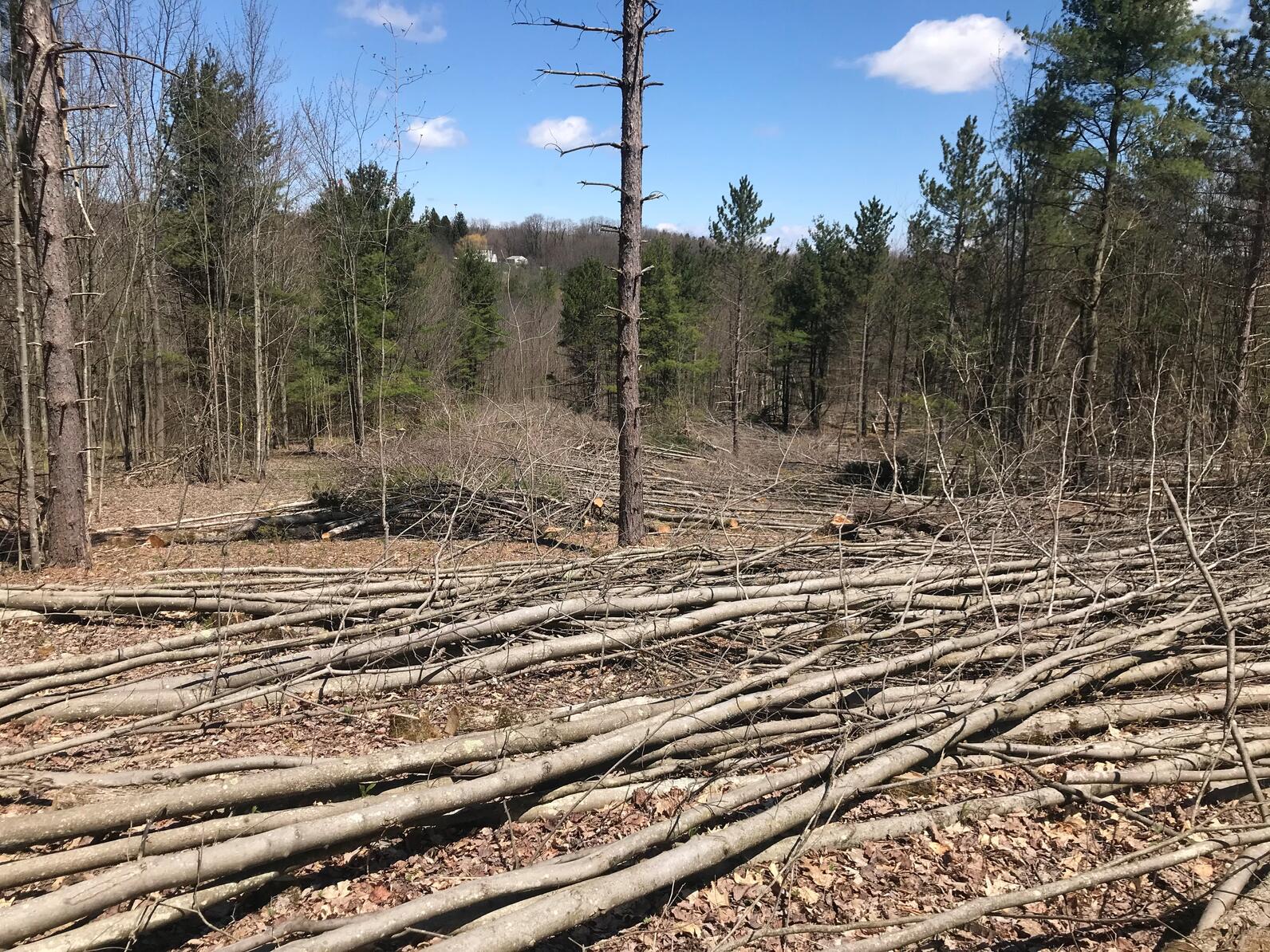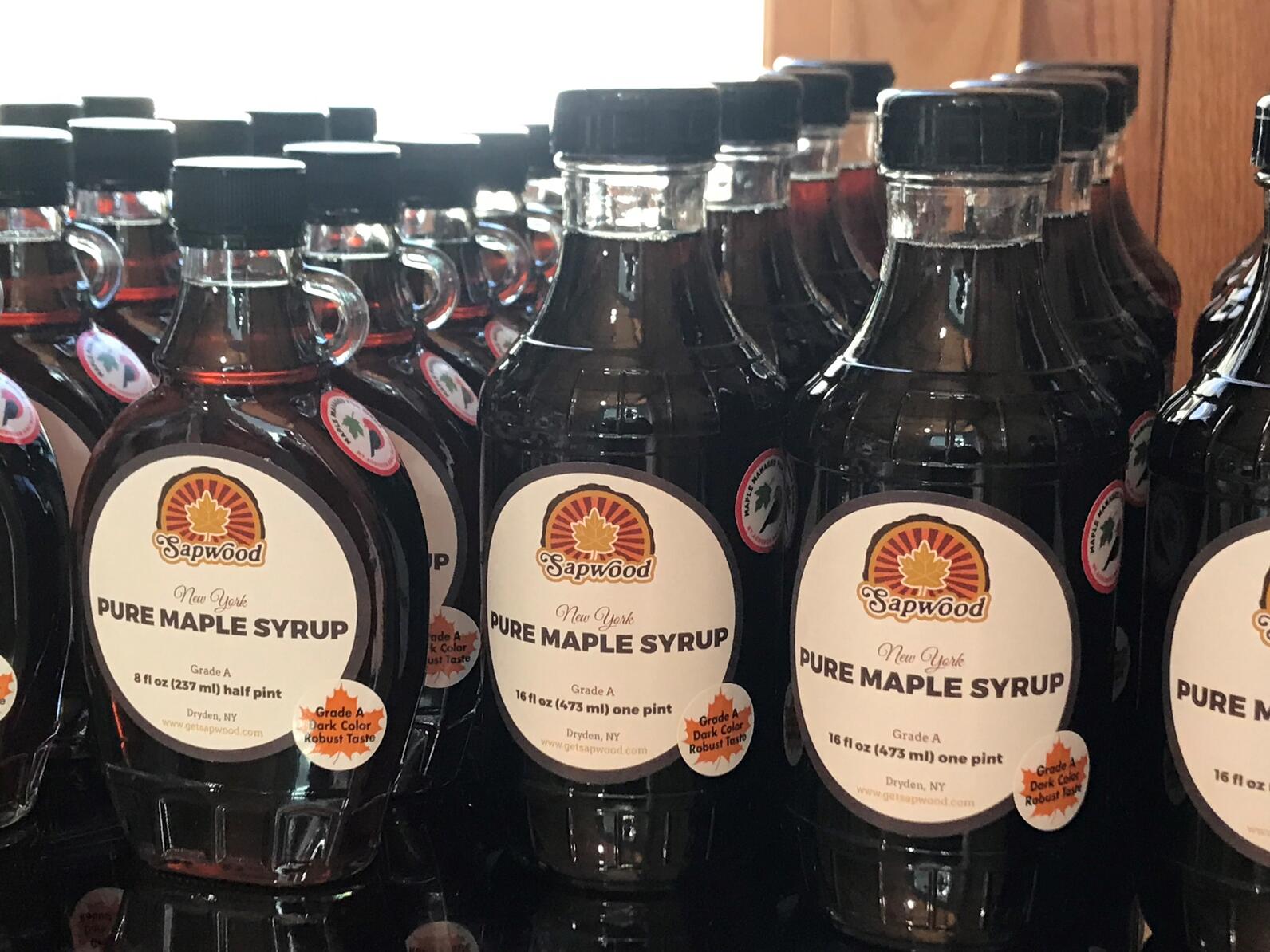"I’ve experienced 80%, 90%, 100% mortality when jumping in with planting. This time around we addressed some of the bigger issues first—from invasives to deer—and created habitat for wildlife, which in turns helped manage issues like rodents… and finally we’re seeing success!”
Sean Carter and his partner Maria Paone operate a small scale sugarbush and mushroom farm on their forested land in Tompkins County near Ithaca, NY in the Finger Lakes region. Their 103-acre “Sapwood Farm” is one of the pilot participants in Audubon New York’s Bird-friendly Maple program, and they work with a forester who is an ecologist and bird expert.
“We’re focused on not just the postage stamp of land that a piece of paper says we own, but how it’s a part of a much larger landscape. Our properties are part of the vital Lake Ontario Watershed located on a hydrologic divide with the Chesapeake Watershed… a riparian corridor runs through the center of both properties. We manage our land with climate change and habitat change in mind, and how that affects our friends, neighbors, and of course all the birds and other wildlife,” says Sean.

In managing the forest, Sean’s focus is on habitat. Not on any particular species, or on what income he can generate, but the long-term health of the forest overall. While they only produce syrup during the winter, Sean and Maria work year-round on the land:
“In the summer we’re doing invasive brush management, when it’s green and flowering. We don’t do any tree felling during the nesting season. Late fall until early spring we’re doing heavy lifting, thinning and harvesting trees. Some of it is left as bird habitat. In the fall, it’s deer management. Each of the two forests we own is divided into stands, and within each stand, management is lined up for the next 5-10 years. There’s always something going on.”
As part of its Healthy Forests initiative, Audubon New York is partnering with maple producers to return sugar bushes to a more natural state. (Sugar bush refers to a forest stand which is utilized for maple syrup; the tree canopy is dominated by sugar maple.) The shift will benefit nesting songbirds, including Scarlet Tanagers, Wood Thrushes, Black-throated Blue Warblers, and Veeries—and make the resulting product more appealing to bird-loving consumers.

"One thing we learned after Audubon came out to assess our land was that having a certain amount of den trees, roosting trees, and downed woody material is important. I’ve always known that a grouse will drum on a downed log but the Audubon assessment helped me determine just how much to leave.
We observe the forest and its inhabitants all the time. Previously, we had middle-aged closed canopy habitat and now, after management, we have early successional, young forest habitat. We’ve made our forest healthier and more diverse, changed the age and structure of the shrubs and trees, and the birds and other wildlife have responded. ‘If you build it they will come,’ and they do!”
At the Ithaca Farmers Market, Maria proudly displays their Bird-friendly Maple sign.
“People generally come to their favorite vendors and speed walk past everyone else,” laughs Sean. “We noticed it sparked interest in people who cruised at a distance, they would turn their head and try to look at it… If they came over, we’d start talking about sugar bushes and then the conversation would go in all sorts of directions, from managing forests for maple to how birds are a keystone species.”
“Given our location in Ithaca I was expecting to talk to a lot of bird people, but that didn’t happen, it was more general curiosity seekers,” says Sean. “I hope the bird people read this article and come say hello!”

Time and again, he says, when the topic of birds come up within his network of friends who own forest across New England and upstate New York, someone inevitably wonders aloud that they “just don’t hear or see the birds in the forest like I remember.”
On their land, however, Sean and Maria “wake up and go to bed with birds, from Great-horned Owls to grouse. We have a pair of ravens nesting nearby, and during nesting season they’re always chasing each other! Never a dull moment.”
Find Maria (and Sean), at the Ithaca Farmers Market and Freeville Farmers Market, or online on Instagram at @sapwoodfarm and https://www.getsapwood.com/.



